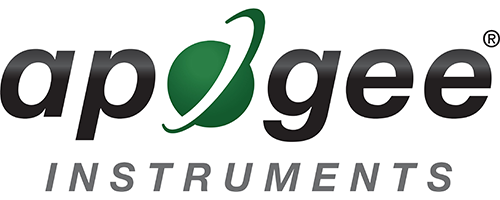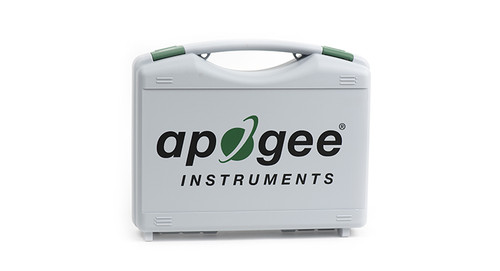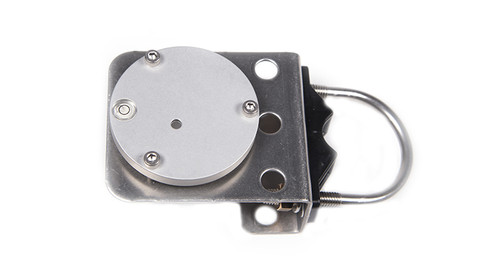The new SQ-626 Extended Photon Flux Density (ePFD), smart sensor can be connected directly to a computer (Windows or macOS X) via USB for taking spot measurements or graphing and datalogging real-time PPFD using the included software. The sensor can also act as a stand-alone PAR datalogger by simply connecting it to most standard 5 V DC USB power plugs. Internal memory within the sensor head is capable of storing 10,000 user-specified periodic measurements that can be downloaded as a CSV file to a computer for analysis.
The sensor features a rugged, aluminum housing that is fully-submersible and built to withstand harsh conditions. The sensor cable includes an IP68 marine-grade stainless-steel cable connector to simplify sensor removal and replacement from permanent installations for maintenance and calibration. Typical applications of Extended Range PFD sensors include incoming PFD measurements over plant canopies in indoor greenhouses or in growth chambers, and reflected or under-canopy (transmitted) PFD measurements in the same environments.Since the detector on this particular Extended Range sensor is sensitive to radiation with wavelengths up to 1100 nm, beyond the range of wavelengths that influence plants, we recommend only using the SQ-626 sensors in indoor grow environments utilizing LED lights.
The analog version of this sensor (SQ-620) comes with the inline cable connector placed 30 cm from the sensor head for either standard use as a long-cable pigtail sensor, or for use with ourbob 体育网址 by unscrewing the connector, discarding the long section of cable and then screwing the sensor to the mating connector on the microCache.
FOR MORE PRODUCT INFORMATION, CHECK OUT THESE LINKS
MORE INFORMATION ON APOGEE ePFD SENSORS >>click here
The SQ-626 is an extended photon flux density (ePFD) sensor with a spectral range of 340 to 1040 nm ± 5 nm, which can be seen in the graph below.
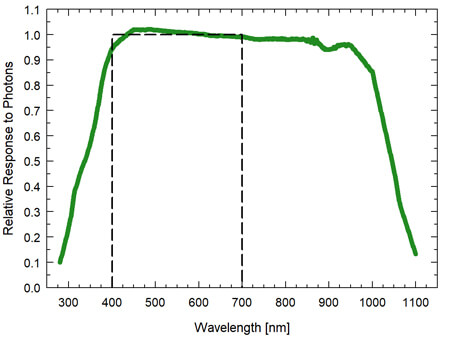
Software Overview
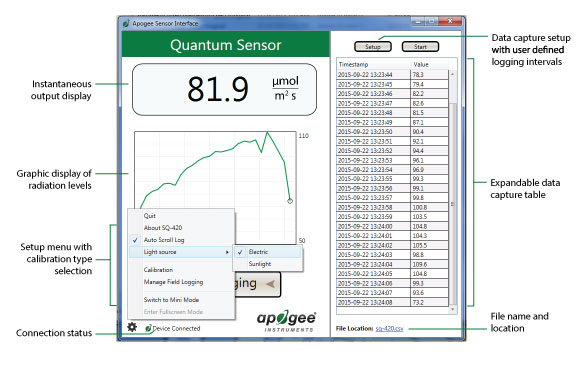
The sensor can be connected to a desktop, laptop, or tablet computer via USB 2.0 type A plug, to be used with the Apogee software (windows compatible, XP and later; Mac compatible, 10.10 and later). The included ApogeeConnect software gives the user control of data logging and calibration settings, provides a real time output display and graph of PPFD measurements and allows the data set to be saved as a csv file.
Click herefor more information on ApogeeConnect software for USB sensors.
The sensor has internal data storage capability with the ability to hold up to 10,000 measurements. This allows the sensor to collect data while connected to most stand-alone 5 V DC power supply such as a USB wall adapter.
The SQ-626 is used for measuring the newest generation of LED grow lights with wavelengths outside the traditional 400-700 nm PAR range. Research has shown the value of adding UV and far-red LEDs to fixtures to achieve various disease control and photomorphogenic effects. The extended range filter of the SQ-620 allows it to measure photons from UV and Far-red. The 1040 nm top cutoff also means the sensor will measure spikes in HID and other broad spectrum lights above the range that influences plants therefore the sensor is only intended for use in LED grow environments.
